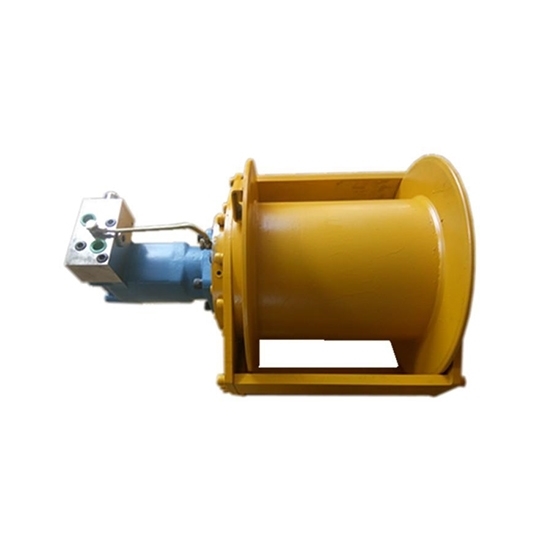
4000 Lbs Hydraulic Winch
from
$3,037.19
Ex Tax: $3,037.19
- Stock: In Stock
- Model: RDDLZ-HWINCH-4000
- Weight: 1.00
- SKU: RDDLZ-HWINCH-4000
Available Options
Create unlimited custom product blocks and display them in accordions or tabs or open blocks. Each block can be assigned to all products at once or specific products according to advanced criteria.
Create unlimited custom product blocks and display them in accordions or tabs or open blocks. Each block can be assigned to all products at once or specific products according to advanced criteria.
Hydraulic winch is a device that uses hydraulic power to reel in or let out a cable or rope. It is commonly used in heavy-duty applications such as towing, construction, and off-road vehicles. The hydraulic system provides the necessary force and control for efficient pulling and lifting operations.
Specification
| Model | RDDLZ-HW30-20 | |
| The 1st Layer | Pull | 4000 lbs (2 ton) |
| Rope Speed | 0~40 m/min | |
| Working Pressure Differential | 15 Mpa | |
| Oil Flow Supply | 75 L/min | |
| Applicable Rope Diameter | 12mm | |
| Hydraulic Motor | BMR-245 | |
| Planetary Reduction Ratio | 1:5 | |
| Layer | Wire Rope Capacity | |
| 1 | 18m | |
| 2 | 38m | |
| 3 | 59m | |
| 4 | 80m | |
| 5 | 110m | |
Note*:
- Never exceed working load limit.
- This hydraulic winch does not include wire rope.
- If you want to purchase wire rope, please contact us.
Dimensions (Unit: mm)
Tips: Difference between crane and winch
A crane and a winch are both mechanical devices used for lifting and moving heavy loads, but they have different designs and purposes. Here are the main differences between a crane and a winch:
- Design and Construction
A crane is a complex machine that consists of a hoist, a boom (or jib), and a base or mounting system. It typically has a rotating structure that allows it to move loads horizontally and vertically. Cranes are commonly used in construction sites, manufacturing facilities, and ports.
A winch is a simpler device consisting of a drum or spool around which a rope or cable is wound. It is usually mounted on a fixed structure or a vehicle. Winches are commonly used in towing applications, off-road vehicles, boats, and other situations where pulling or lifting is required. - Mobility and Range of Motion
Cranes are designed to have a wide range of motion and mobility. They can rotate 360 degrees, and some cranes have telescopic or articulated booms that can extend or reach great heights. This allows cranes to lift and move loads over a large area.
Winches are typically fixed in one position and have limited mobility. They are mainly used for straight-line pulling or lifting in a specific direction. The range of motion of a winch is determined by the length of the cable or rope wound around the drum. - Load Capacity
Cranes are designed to lift and move heavy loads, ranging from a few hundred kilograms to several tons or more. They are equipped with various mechanisms, such as hydraulic systems and counterweights, to handle these heavy loads safely.
Winches are generally used for lighter loads compared to cranes. While winches can handle significant weights, their load capacity is typically lower than that of cranes. They are commonly used for pulling or lifting loads up to a few thousand kilograms. - Applications
Cranes are versatile machines used in a wide range of industries and applications. They are commonly used in construction for lifting materials and equipment, in shipping ports for loading and unloading cargo, in manufacturing plants for moving heavy machinery, and in the oil and gas industry for various tasks, among other applications.
Winches are primarily used for pulling or lifting applications. They are commonly employed in towing vehicles, recovery operations, off-road vehicles, and marine applications for anchoring, mooring, or pulling boats.
Builder in Product TAB
NEW! Since Journal 3.2, the much improved T.A.B (Tabs Accordion Blocks) system supports the page builder inside the tab content. Unlimited Blocks, Tabs or Accordions with any HTML content or the builder interface (supporting custom rows/columns/modules) can be assigned to any individual product or to certain groups of products, like entire categories, brands, products with specific options, attributes, price range, etc.
You can indicate any criteria via the advanced product assignment mechanism and only those products matching your criteria will display the modules.
Also, any module can be selectively activated per device (desktop/tablet/phone), customer login status and other criteria. Imagine the possibilities.
